HumBug Online
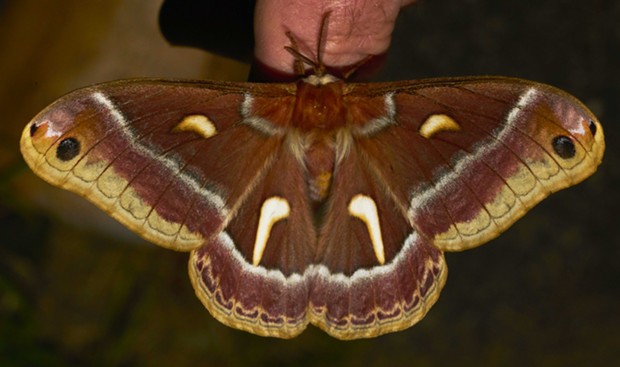
- Photo by Anthony Westkamper
- Ceanothus moth shows its 5-inch wingspan (Hyalophora euryalus).
Back when cameras used film, I noticed large sections of leaf chewed away on the madrone tree in my front yard. I found three large green caterpillars gnawing away at them. I watched carefully over the next few weeks until they each spun a cocoon. I put a mesh bag over each of them and waited. Sadly, I hadn't tied the mouths of the bags tightly enough to keep out earwigs, which ate the newly emerging moths. Ever since, I've been trying to get a shot at one of the giant silkworm moths, locally known as redwood moths. I've also heard them referred to as Gypsy moths, which a really completely different creatures.
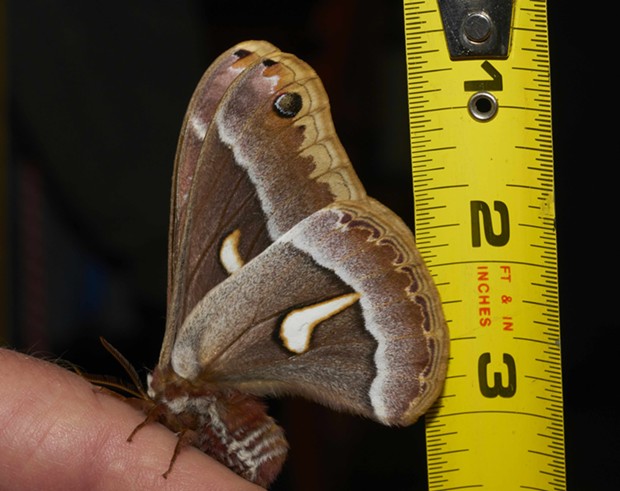
- Photo by Anthony Westkamper
- Underwings of ceanothus moth with ruler (Hyalophora euryalus).
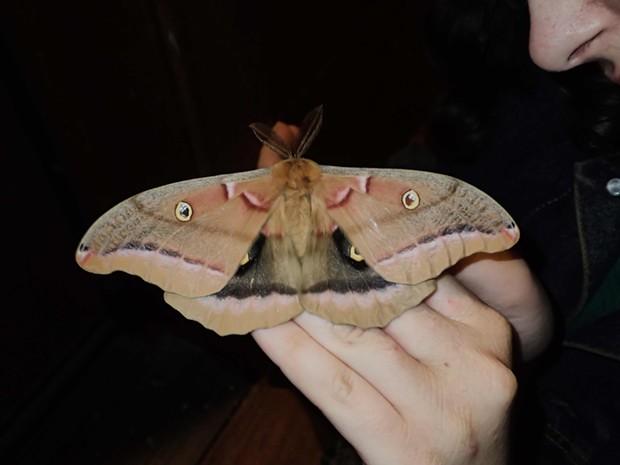
- Photo by Anthony Westkamper
- Polyphemus moth (Antheraea polyphemus), the largest moth in our area wingspan almost 6 inches.
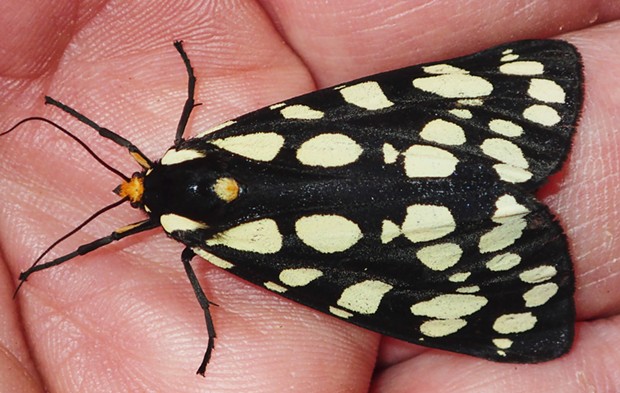
- Photo by Anthony Westkamper
- Rangeland tger moth (Platyprepia virginalis), 3-inch wingspan.
Update: In my post on May 6 I mentioned the little beetle I found in my dog's water bowl 10 years ago as being unidentified. BugGuide.net came to rescue: The little scarab is indeed a burrowing dung beetle, known as Odonteus obesus.
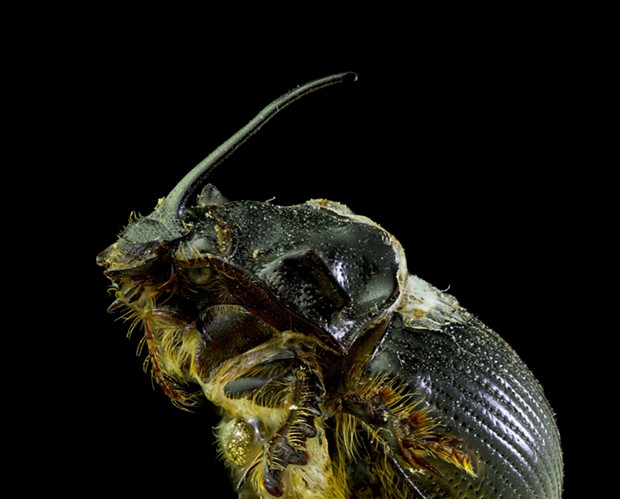
- Photo by Anthony Westkamper
- Finally identified 10 years later, Odonteus obesus.
Comments